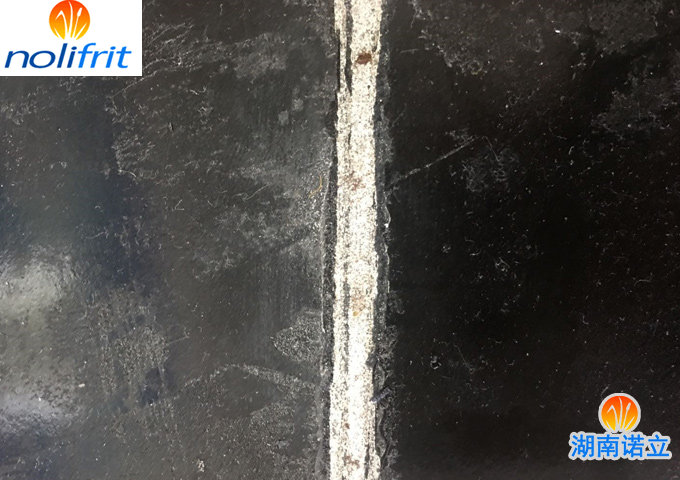
News
What Causes Porcelain Enamel Lines And Cracks Defect
- Categories:Company news
- Author:
- Origin:
- Time of issue:2021-09-06
- Views:0
(Summary description)After the enamel product is fired, the cracks in the porcelain layer are called cracks; although the cracks in the porcelain layer are fused during firing, the traces still left are called lines. Lines often appear on the bottom and body of the vessel. Other defects that form textures are also classified here.
What Causes Porcelain Enamel Lines And Cracks Defect
(Summary description)After the enamel product is fired, the cracks in the porcelain layer are called cracks; although the cracks in the porcelain layer are fused during firing, the traces still left are called lines. Lines often appear on the bottom and body of the vessel. Other defects that form textures are also classified here.
- Categories:Company news
- Author:
- Origin:
- Time of issue:2021-09-06
- Views:0
After the enamel product is fired, the cracks in the porcelain layer are called cracks; although the cracks in the porcelain layer are fused during firing, the traces still left are called lines. Lines often appear on the bottom and body of the vessel. Other defects that form textures are also classified here.

1. Crack
In daily enamel products, cracks often appear on the edges where stress is concentrated. There are three types of edge cracks: vertical cracks are called straight cracks; parallel to the edges are called transverse cracks; circular cracks are called circular cracks. The reasons are as follows: ①The side enamel slurry has too much soluble salt, the side enamel slurry is too finely ground, and the storage time is too long. ②The edge enamel slurry is mixed with garbage. ③The edge strength of the billet is poor. ④ The iron billet welding is uneven or the welding point distance is too large. ⑤ There are pores or insufficient firing at the edge of the enamel ground coat blank. ⑥ The porcelain layer is too thick, repeatedly firing, and accelerated cooling. ⑦The shaping temperature is too low and the shaping operation is improper. ⑧ Excessive overlap, side bumps, and prying injuries when the product is stored.
2. Line pattern
The integrity of the porcelain layer is not destroyed, but it has a great impact on the appearance of the product. The main forms are: black line pattern (with exposed ground coat), white line pattern (without leakage of ground coat), chrysanthemum print, spiral pattern and flower reflection light pattern. The main reasons are as follows: ①The enamel slurry is too finely ground, and there are too many soluble salts. ②The strength of the powder layer is small and the coating is too thick. ③The wet compact dries too fast and burns too quickly. ④The dry powder body is bruised, pinched, or printed with excessive force (chrysanthemum print). ⑤The semi-finished product is crushed, bruised or pried. ⑥ Improper matching of welding materials and blank body (spiral pattern) (precautionary measures: the steel plate of the spot welding product accessory is one size thinner than the blank body, and the product accessory steel plate of the butt welding product is one size thicker than the blank body). ⑦The decorative enamel is not soft enough or overlaps too much (pattern road, reflection pattern).
3. Shrinkage
Also known as "pull crack", it is a large crack. When firing, it shrinks and rolls up from the cracks of the dry powder layer to expose the ground coat or metal. The main reasons for the shrinkage are as follows: ① The clay in the enamel enamel slurry is of poor quality or insufficient amount. ②The enamel slurry is too finely ground (precautionary measures: grinding and adding urea). ③The enamel slurry is too thick. ④The body is not degreasing clean or there is oil stain on the surface of the enamel layer. ⑤ Excessive powder accumulation in the grooves and concave corners of the green body (commonly seen in cast iron grilling nets and grilling plates). ⑥The strength of the dry powder layer is poor, and cracks appear due to vibration (precautionary measures: grinding and adding sodium aluminate) ⑦It suddenly enters the area with too high temperature during drying.
4. Orange peel
Orange peel-like irregular wrinkles on the surface of the porcelain layer. The main reasons for orange peel wrinkles are as follows: ①The surface tension of enamel is large and the viscosity is large. ② The air pressure is too high during spraying. ③The enamel slurry particles are too thick and the coating is too thick. ④ The coarse particles of enamel slurry that have been stored for a long time sink. ⑤The temperature of the enamel firing furnace is too high.
5. Cold frame printing
Scratches caused by irregular movement of the powder on the firing frame before firing. The main reasons for its formation are as follows: ① The movement is unstable when swinging the frame. ②Unstable operation after swinging the rack.
6. Tool marks
It is more common in box furnaces. After firing, the porcelain layer has not yet condensed and the groove touched by the iron fork is not solidified. It is easy to have plastic tool marks when the porcelain layer is not solidified.
Scan the QR code to read on your phone
CONTACT US
Location:No199, North Zhujiang Road Tianyuan District,
Zhuzhou City, Hunan Province, China
Tel:+86-731-28212146 +86-731-28212147
Mobile: +86-13574208778
Email: jack@nolifrit.com
WhatsApp : +8613574208778
WeChat :+8613574208778














